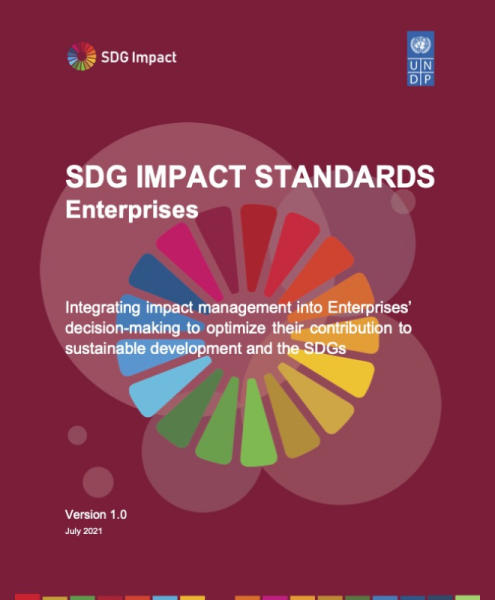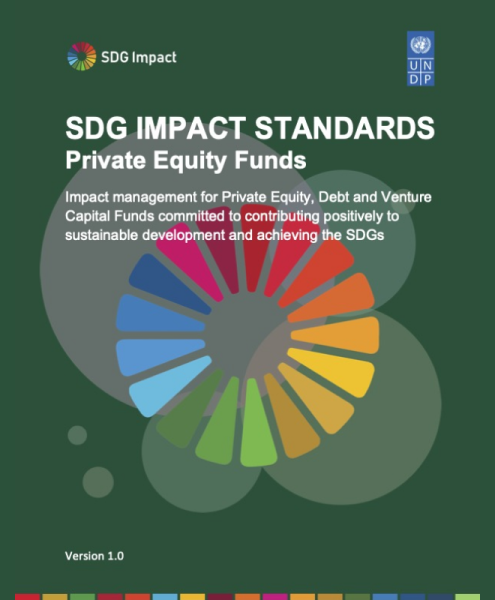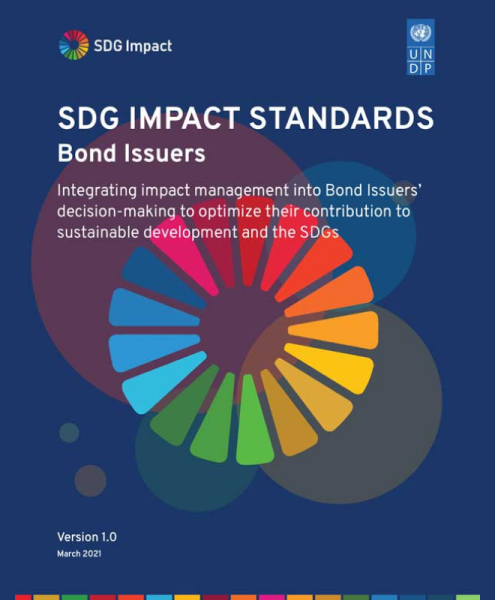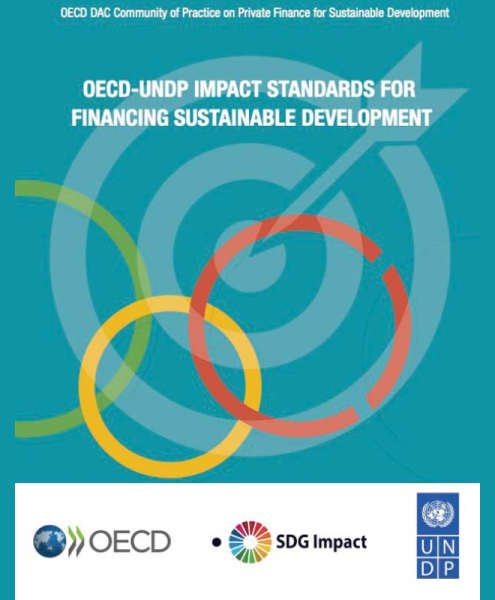The diagram illustrates how the SDG Impact Standards sit as the core decision-making framework that bring in high-level principles, existing and future frameworks and supporting resources.
SDG Impact Standards
The SDG Impact Standards are management standards designed to guide businesses and investors to embed sustainability and the SDGs at the core of their internal management and decision-making practices – and have the confidence they are doing so in a holistic and systematic way.
They provide the framework to support organizations to make better decisions by placing sustainability and the SDGs at the heart of value creation and central to purpose. They guide businesses and investors to decide which impacts are important and relevant. This in turn informs organizations on how those impacts should be managed. When there is insufficient data to make a decision, the SDG Impact Standards can guide organizations on managing risks. They also help to align incentives across an organization, ensuring governance practices reinforce commitments and intent.
They guide organizations to reimagine business models and partnerships to innovate, create solutions and reach underserved stakeholders, involving them in decision-making.
Role of SDG Impact Standards
The SDG Impact Standards build on and complement existing work undertaken by others on impact management and measurement. In fact, in many ways the SDG Impact Standards provide a decision-making framework to increase coherence between existing principles, frameworks and tools. It also fills knowledge gaps in current market practices which are undermining progress towards sustainability and the achievement of the SDGs.
All four sets of the SDG Impact Standards are organized around the same key components and follow the same structure. This enables a shared language and approach for sustainability, the SDGs and impact management, making it easier to connect different industry players across the economic system. This lays the groundwork for an enabling environment for greater cross-sector collaboration and innovation in SDG financing solutions.
How SDG Impact Standards Relate to Other Frameworks and Resources
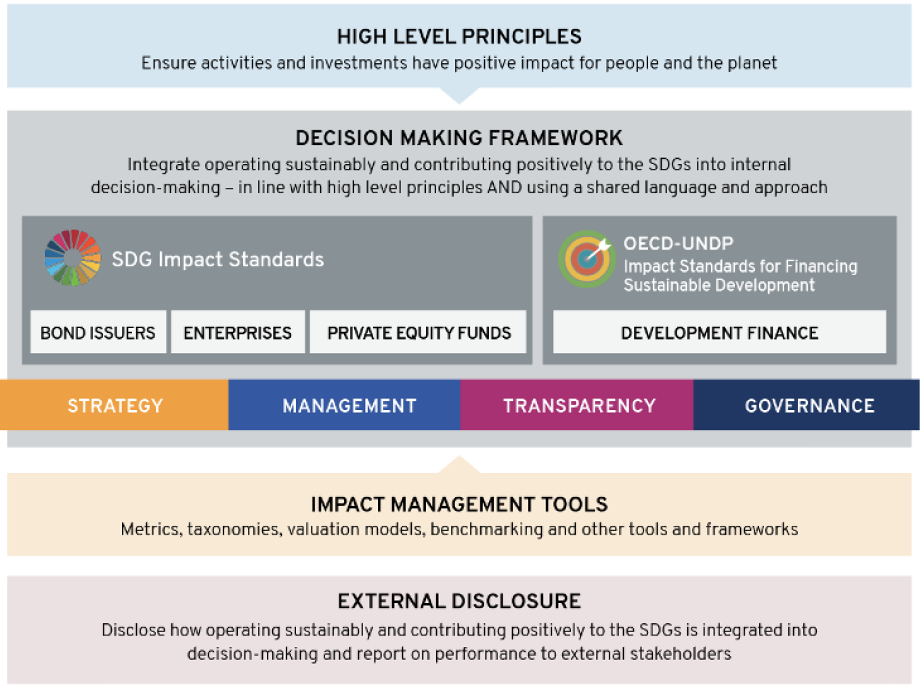
High Level Principles
The SDG Impact Standards are aligned with a number of high level principles, including:
- Operating Principles for Impact Management
- UNEP FI’s Positive Impact Finance and Responsible Banking Principles
- UNGC Principles on Integrated SDG Investments and Finance
- Social Value International – Social Value Principles
- GIIN Core Characteristics of Impact Investors
Implementing the SDG Impact Standards should ensure alignment with the relevant high-level principles as well. The SDG Impact Standards generally go further than the high-level principles, providing additional guidance on operationalizing the high-level principles, and filling gaps in management practice and decision-making not covered by the high-level principles.
Impact Management Tools
The SDG Impact Standards do not dictate which IMM tools to use, but rather provide guidance on how organizations can select from existing and future tools available and apply them effectively to help make better decisions. Such tools may include metrics, taxonomies, valuation models, benchmarking tools e.q. IRIS+, GRI, UNCTAD metrics, Voluntary National Reviews (VNRs) on the implementation of the SDGs, SDG Impact Market Intelligence Investor Maps, Nationally Determined Contributions (NDCs) to the Paris Accord, Blab SDG Action Manager and UNEP FI Impact Analysis Tools.
External Disclosure
On the basis that external reporting should be a summary of managements’ decisions, implementing the SDG Impact Standards will help organizations be prepared to meet their current and future regulatory disclosures and external reporting requirements of other stakeholders. This includes whether these requirements are on a full well-being, also known as, double materiality basis or on a more limited financial materiality basis. For instance, preparing for EU Corporate Sustainability Reporting (CSRD) or International Sustainability Standards Boards (ISSB) requirements, preparing reports based on Global Reporting Initiative (GRI), the Sustainable Development Goal Disclosure Recommendations or using the Integrated <IR> Reporting Framework.
Core Elements of SDG Impact Standards
SDG Impact Standards prioritize sustainability and the SDGs in value creation through key practices: Strategy, Management Approach, Transparency, and Governance. They enhance organizational sustainability, aid informed decision-making, and emphasize respect for human rights and responsible business conduct.
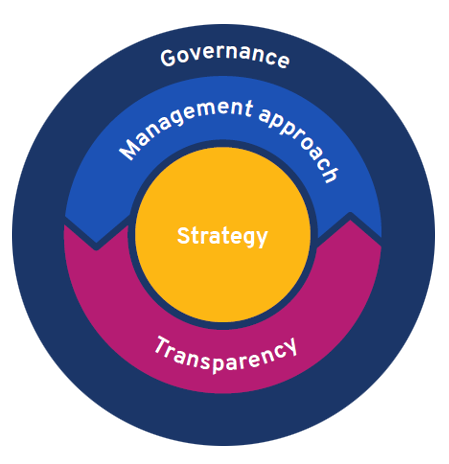
Why the SDG Impact Standards are needed
How to Use the SDG Impact Standards
SDG Impact Standards Glossary of Terms
SDG Impact Standards Most Relevant to You
Guidance for the SDG Impact Standards Most Relevant to You
Self Assessment Tool for the Relevant set of SDG Impact Standards
SDG Impact Assurance and Seal
The SDG Impact Assurance Scheme is based on the SDG Impact Standards, but with minimum requirements set at lower level to encourage participation and continuous improvement towards best practice in line with the SDG Impact Standards over time.
The SDG Impact Assurance Scheme is being designed to meet the conformity assessment requirements of ISO 17065 (Conformity assessment – Requirements for bodies certifying products, processes and services).
The SDG Impact Seal will provide a market signal to distinguish organizations who are more likely to be operating sustainably and contributing positively to the SDGs, based on their internal sustainability and impact management practices.

















